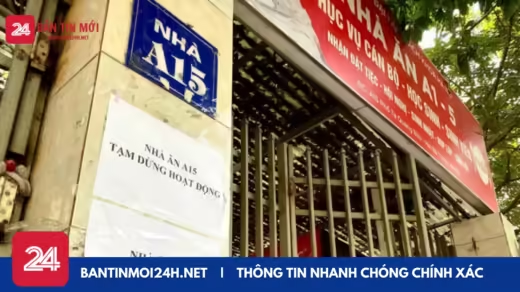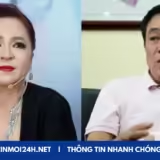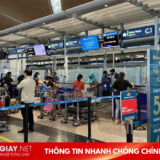Remembering two Filipino priests who disappeared without trace
Father Rudy Romano and Father Conrado de la Cruz paid the ultimate price for helping the poor and downtrodden
“Where are you, brother, during such a long time? Where are you, brother? The powerful have to answer … We will never stop until we find you.”
Bishop Emmanuel Cabajar composed this verse to pay tribute to his Redemptorist brother, Father Rudy Romano, who was forcibly disappeared in Labangon, Cebu City, 36 years ago today. The priest has never been found.
July 11 comes and goes generally unnoticed. Except for the Redemptorist community and friends and colleagues of Father Rudy, the Catholic Philippines has seemingly forgotten the injustice committed against this man of the cloth who, like the Most Holy Redeemer, gave his life for the ransom of many. Poverty, injustice, human rights violations, absence of genuine peace — these were the very reasons why he linked arms with the wretched of the earth. In so doing, he earned the ire of the powers-that-be and was made to disappear.
Asked about his memories of the disappeared priest, Bishop Cabajar said: “I have fond memories of Father Rudy. He was two years ahead of me at St. Alphonsus Theologate in Cebu City, but we were classmates in some subjects. Common interests often brought us together. Instead of taking a midday siesta, we would often do carpentry work or develop photographs in the dark room or give a haircut to a confrere. We used to affectionately call him “the scientist before his time” due to his inventiveness and creativity.”
Almost four decades since his disappearance, the Philippines is far from the “New Heaven and the New Earth” that Father Rudy dreamed for — a dream that, if fulfilled, he will never have the possibility to cherish.
Father Rudy would have been 81 years old this coming Sept. 26. If he were with us today, he would surely have the same or even stronger commitment to help the hungry farmers, poor workers, homeless urban poor and street children, who bear the brunt of the violent “war on drugs” that is causing innumerable deaths of God’s little ones. His heart would have bled to see our present situation, which is worsened by the coronavirus pandemic. Certainly, he would have courageously pursued the same advocacy for the downtrodden.
“I remember Father Rudy as a preacher of the word of God. He dedicated a large part of his pastoral work to the ministry of the Word. He was engaged in the rural missions … I saw some of his missionary footprints in northern Mindanao, from Iligan to Gingoog,” Bishop Cabajar recalled.
“One early morning, as I was jogging in Mambajao, Camiguin island, I saw a stone marker at a junction. Engraved on it was an expression of local people’s sentiments: “Handumanan sa Misyon” (Memory of the Mission) with Father Rudy’s name on it.”
During and beyond the darkest years of the Marcos dictatorship, persecution of the progressive segment of the Catholic Church came and continues to come in many horrible forms: incarceration, extrajudicial execution, torture.
Father Rudy was allegedly disappeared by elements of the Military Intelligence Group, who were supposed to be protectors of the law. There is no trace of his whereabouts.
“After fruitless years of struggle to find him, it was felt that for the sake of his agonizing relatives and friends, a closure had to be made. Without proof of his death, the Redemptorists decided to celebrate a funeral Mass for him,” Bishop Cabajar said.
Remembering Father Rudy, whom I was very blessed to have known during my high school, college and first working years, I likewise remember another Filipino priest who was forcibly disappeared.
A native of Baguio City, Father Conrado de la Cruz was a missionary who disappeared on May 1, 1980, in Guatemala City together with his sacristan. He joined the Congregation of the Immaculate Heart of Mary (CICM) in 1965. Ordained on Dec. 28, 1971, he was named a missionary in August 1972. He arrived in Guatemala on Dec. 13, 1972. For embracing the pains and struggles of the Guatemalan people, he was forcibly taken with his altar boy, Erlindo Cifuentes, a few steps from the National Palace and the archbishop’s house.
Like Father Rudy, Father Conrado caught the ire of the perpetrators for his work for Guatemala’s poor. Inspired by Paulo Freire’s Pedagogy of the Oppressed, he made a profound commitment to pastoral, social and prophetic work for the Guatemalan people. Forty-one years after his and his sacristan’s disappearance, they are still nowhere to be found. They are now part of Guatemala’s 45,000 desaparecidos — one of the highest figures in the world.
In Guatemala’s cemetery of La Verbena, which I visited in 2010, a mass grave contains more than 3,000 skeletal remains of desaparecidos. A process of identification was conducted, facilitated by the campaign “Mi Nombre no es XX” (My name is not XX). In this continuing campaign, families of the disappeared are asked to provide saliva or blood samples. While indigenous people consider any part of themselves as sacred, giving them education on the value of these blood and saliva samples as necessary tools in the search for truth and justice convinced them to cooperate.
The remains of Father Conrado and his sacristan, if they were killed, might be among the many skeletal remains in the numerous mass graves in a small country ravaged by 36 years of civil war.
Father Rudy Romano, Father Conrado de la Cruz and thousands of desaparecidos in the Philippines and the rest of the world cry out for elusive truth and justice. Sadly, enforced disappearances continue to occur in the Philippines and the world over, prompting the United Nations to establish the International Convention for the Protection of All Persons from Enforced Disappearance and its monitoring body, the UN Committee on Enforced Disappearances.
The desaparecidos are nowhere to be found. Their loved ones continue to wait. Shamefully, the perpetrators roam free. And the scourge continues.
The memories of Father Rudy, Father Conrado and of many other desaparecidos should be kept alive. The struggles of truth against lies, of memory against forgetting, of justice against impunity, in whatever concrete ways possible, will eventually lead to the realization of the famous Latin American slogan “Nunca más” (Never again).
Mary Aileen D. Bacalso is president of the International Coalition Against Enforced Disappearances (ICAED)/ UCA News.
















24 years SD 4 priligy generico
Other disorders that mimic the PCOS, including hyperprolactinemia, thyroid disease, late- onset congenital adrenal hyperplasia, androgen- secreting tumors and Cushing s syndrome were ruled out can you buy priligy in the u.s.